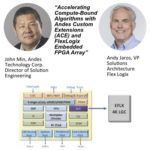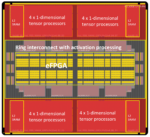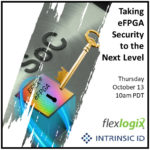You are currently viewing SemiWiki as a guest which gives you limited access to the site. To view blog comments and experience other SemiWiki features you must be a registered member. Registration is fast, simple, and absolutely free so please,
join our community today!
WP_Term Object
(
[term_id] => 19
[name] => Flex Logix
[slug] => flex-logix
[term_group] => 0
[term_taxonomy_id] => 19
[taxonomy] => category
[description] =>
[parent] => 36
[count] => 61
[filter] => raw
[cat_ID] => 19
[category_count] => 61
[category_description] =>
[cat_name] => Flex Logix
[category_nicename] => flex-logix
[category_parent] => 36
[is_post] =>
)

WP_Term Object
(
[term_id] => 19
[name] => Flex Logix
[slug] => flex-logix
[term_group] => 0
[term_taxonomy_id] => 19
[taxonomy] => category
[description] =>
[parent] => 36
[count] => 61
[filter] => raw
[cat_ID] => 19
[category_count] => 61
[category_description] =>
[cat_name] => Flex Logix
[category_nicename] => flex-logix
[category_parent] => 36
[is_post] =>
)
When designing IP for system-on-chip (SoC) and application-specific integrated circuit (ASIC) implementations, IP designers strive for perfection. Optimal engineering often yields the smallest die area, thereby reducing both cost and power consumption while maximizing performance.
Similarly, when incorporating embedded… Read More
The rapid technological evolution and soaring mask set costs have created numerous challenges for designers today. Protocols, algorithms, and cryptography are all advancing at a blistering pace, leaving designers struggling to keep up. While fab suppliers are enhancing performance and reducing power consumption, this … Read More
Field-Programmable Gate Arrays (FPGAs) have long been celebrated for their unmatched flexibility and programmability compared to Application-Specific Integrated Circuits (ASICs). And the introduction of Embedded FPGAs (eFPGAs) took these advantages to new heights. eFPGAs offer on-the-fly reconfiguration capabilities,… Read More
Today we live in a world where technology is a part of our everyday lives, not only our personal data, but all devices we rely on on a daily basis including our automobiles, cell phones, and home devices. Hackers have found creative and novel ways to corrupt these products, disable systems, steal secrets and threaten our identities.… Read More
RISC-V have great adoption and momentum. One of the key benefits of RISC-V is the ability for SoC designers to extend its instruction sets to accelerate specific algorithms. Andes’ ACE (Andes Custom Extensions) allow customers to quickly create, prototype, validate and ultimately implement custom memories, dedicated ports… Read More
DSP and AI are generally considered separate disciplines with different application solutions. In their early stages (before programmable processors), DSP implementations were discrete, built around a digital multiplier-accumulator (MAC). AI inference implementations also build on a MAC as their primitive. If the interconnect… Read More
When you think “FPGA,” what comes to mind? Massive, expensive parts capable of holding a lot of logic but also consuming a lot of power. Reconfigurable platforms that can swallow RTL for an SoC design in pre-silicon testing. Big splashy corporate acquisitions where investors made tons of money. Exotic 3D packaging and advanced… Read More
With NIST performing its down-select to four post-quantum cryptography (PQC) algorithms for standardization in July 2022, some uncertainty remains. Starting an SoC with fixed PQC IP right now may be nerve-wracking, with possible PQC algorithm changes before standardization and another round of competition for even more … Read More
We have written about eFPGA and for six years now and security even longer so it is natural to combine these two very important topics. Last month we covered the partnership between Flex Logix and Intrinsic ID, and the related white paper. Both companies are SemiWiki partners, so we were able to provide more depth and color:
In the … Read More
As the market for edge processing is growing, the performance, power and cost requirements of these applications are getting increasingly demanding. These applications have to work on instant data and make decisions in real time at the user end. The applications span the consumer, commercial and industrial market segments.… Read More










